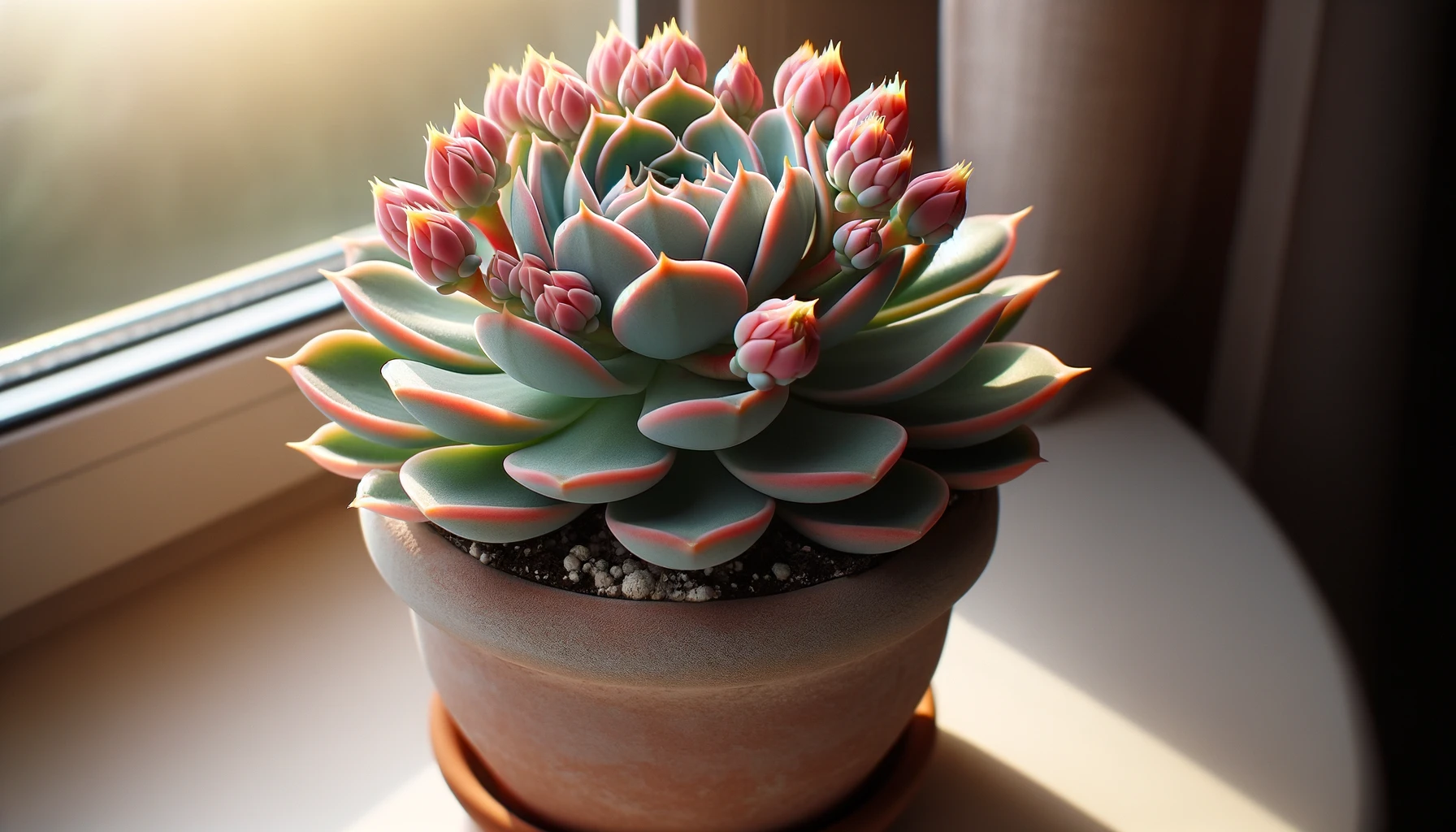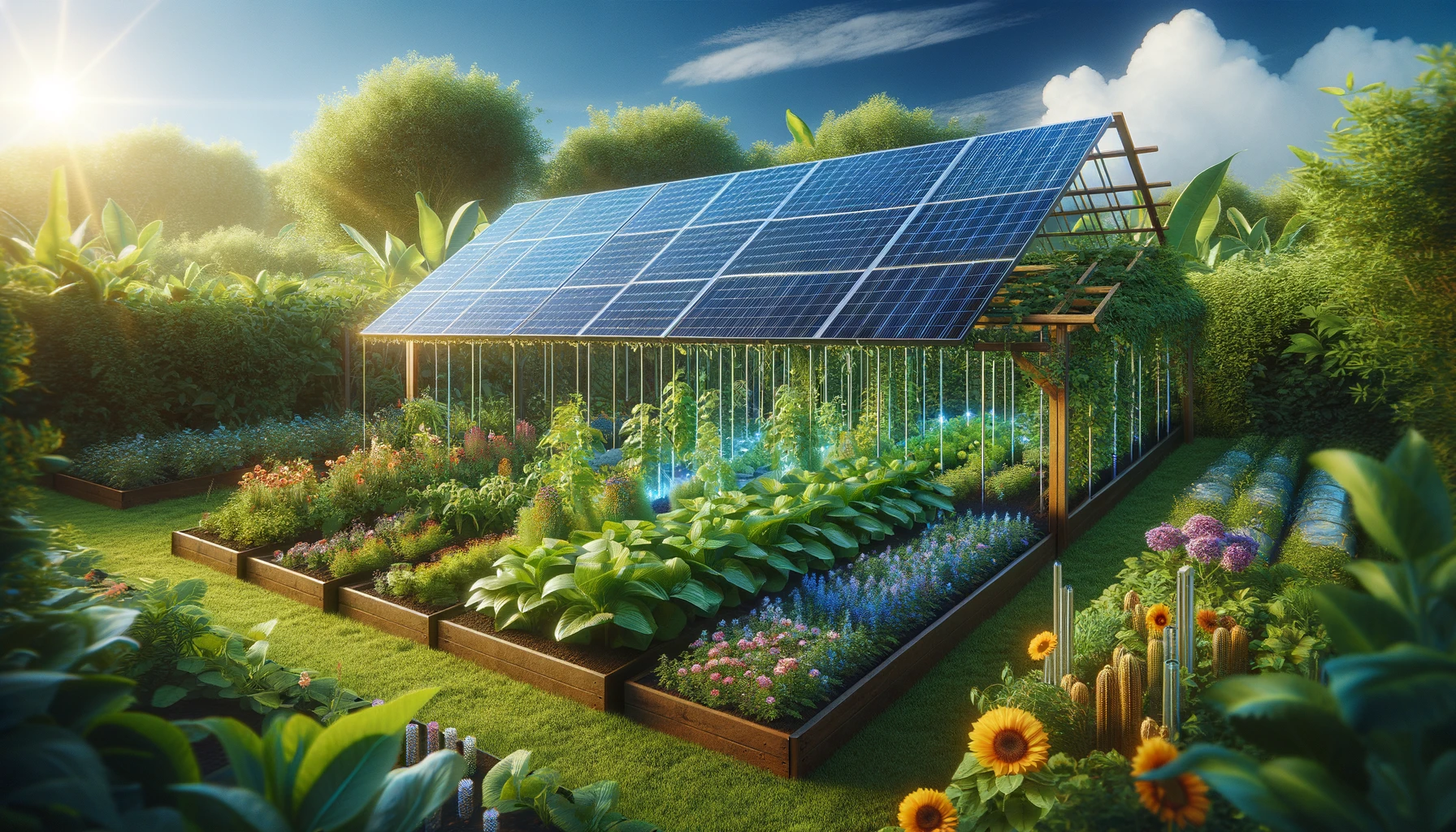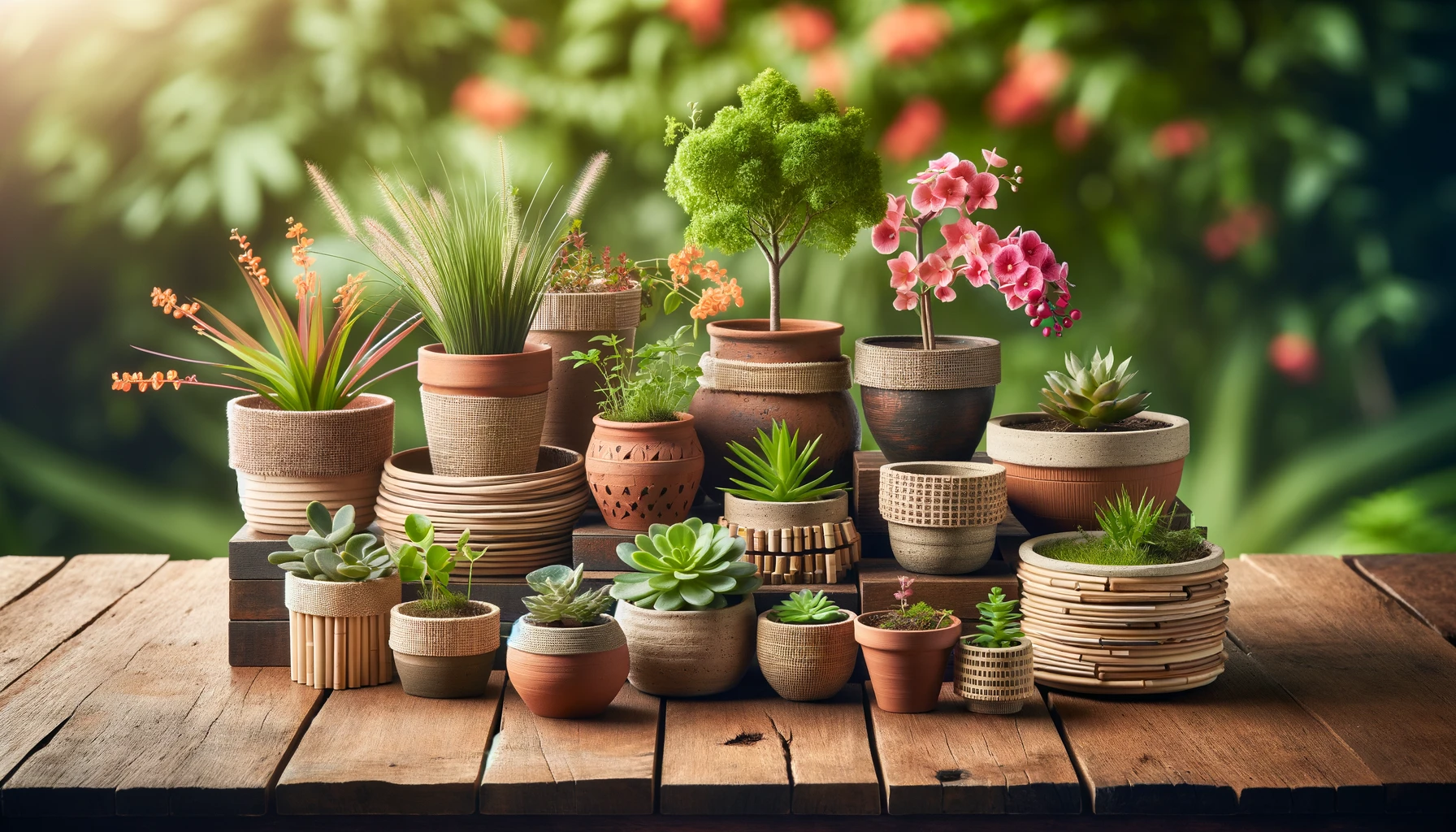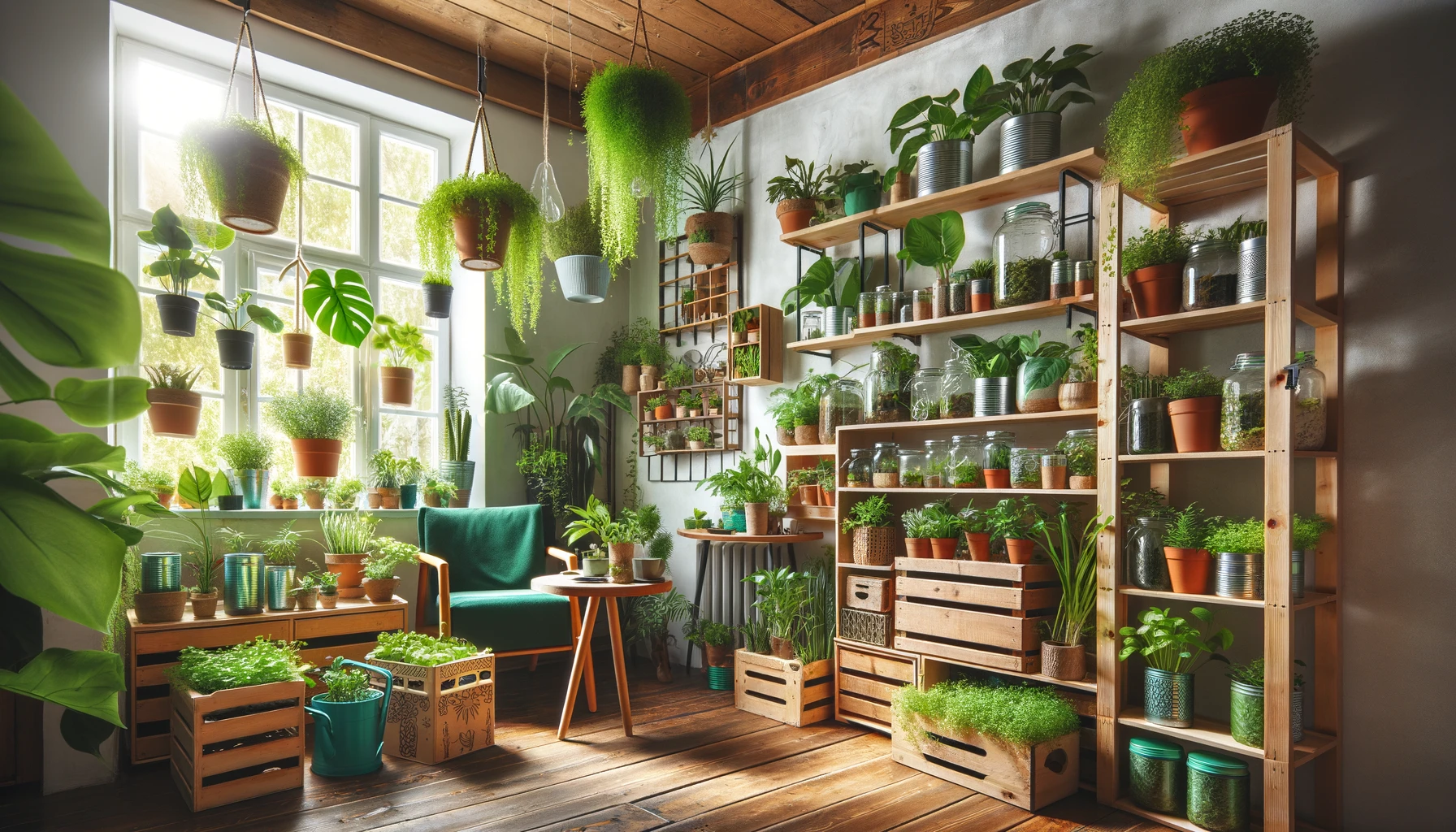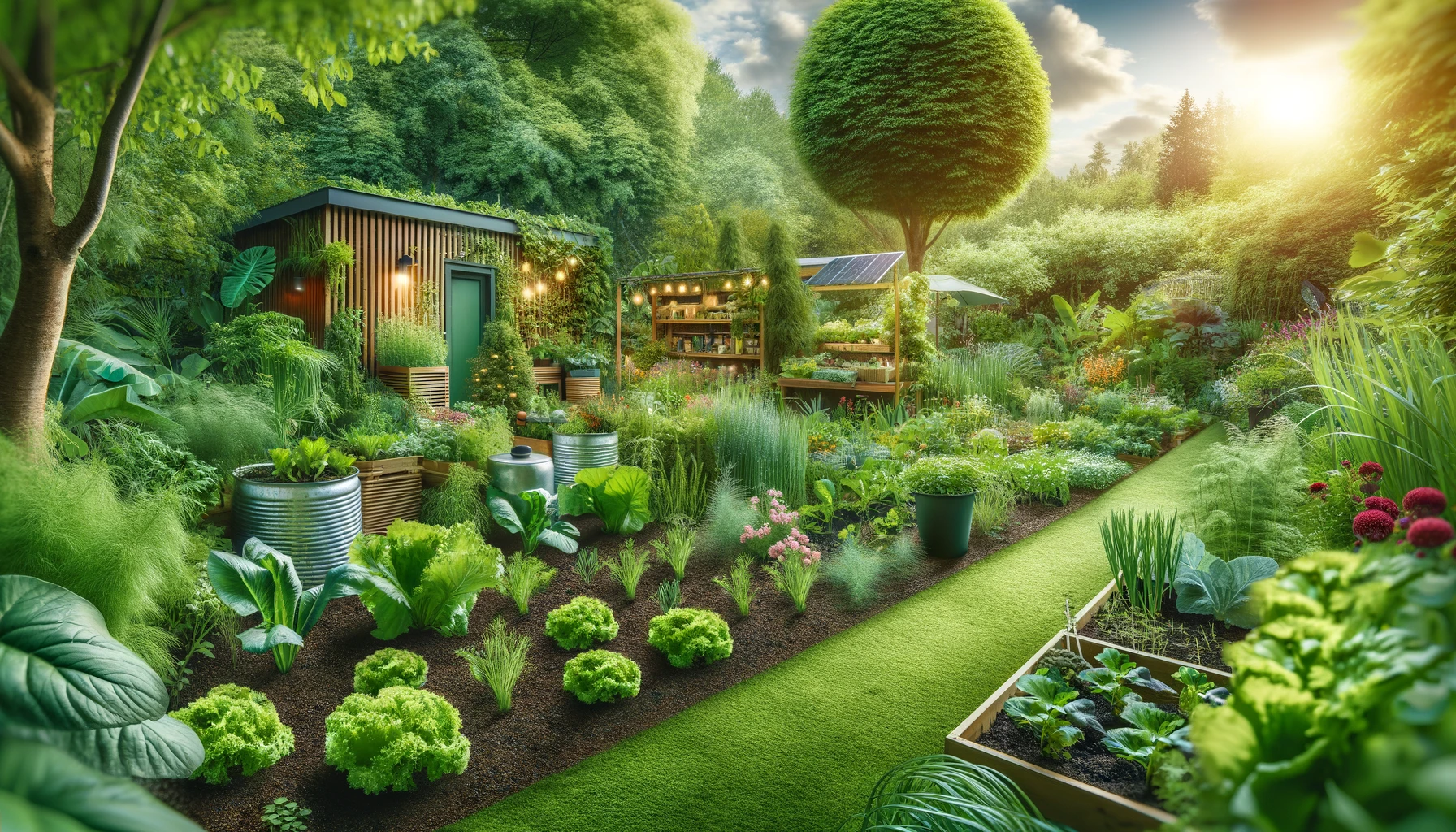This post contains affiliate links. If you buy something from one of our links we may earn a commission. Thanks
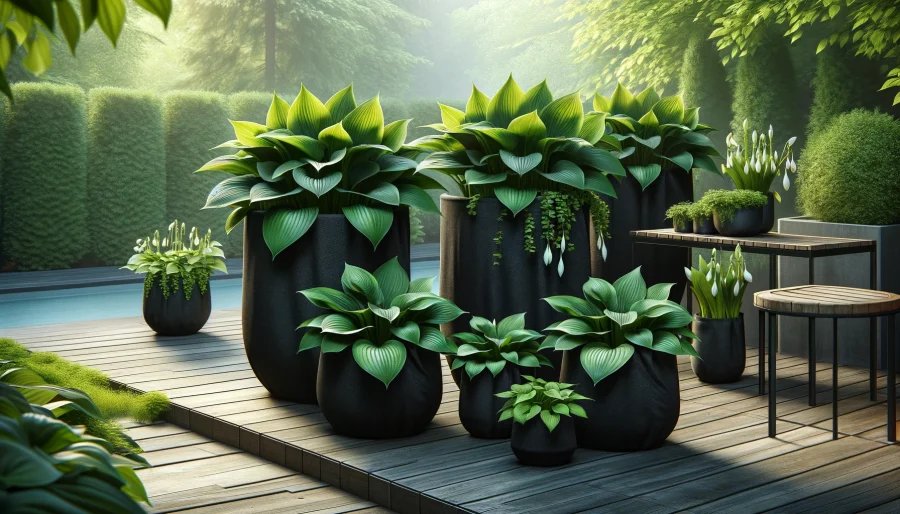
Howdy folks! Are you curious about how to grow Hostas in pots? Whether you want to spruce up your patio, balcony, or indoor space.
Growing Hostas in containers is a fantastic way to bring a touch of lush, leafy greenery to your environment. Let’s dig into the basics and get those Hostas flourishing!
Growing Hostas in Pots Key Takeaways:
- Growing Hostas in Pots is an excellent way for gardeners with limited space to enjoy these lush, leafy plants.
- Hostas thrive in shaded areas and need well-draining soil and regular watering.
- They are perfect for adding a vibrant touch to patios, balconies, and indoor settings.
Growing Hostas in Pots: A Comprehensive Guide for Gardeners
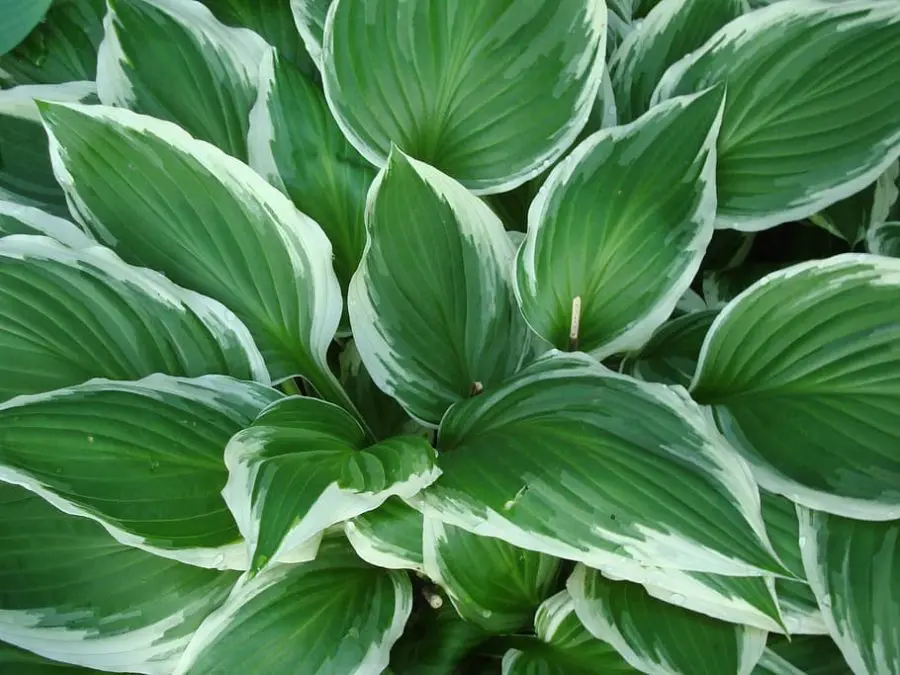
Howdy everyone! Got a shady spot and want to grow something? Did you know growing Hostas in pots is possible?
You can grow Hostas in pots indoors or outdoors and we’ll tell you how.
Today, we’re diving into the lush world of Hostas, a true gem for any shade garden.
Renowned for their resilience and striking foliage, Hostas have captured the hearts of gardeners everywhere.
Not only do they thrive under the canopy of larger plants, but their adaptability to container gardening opens up endless possibilities for spaces of all sizes.
Whether you have a sprawling backyard, an apartment window, or a cozy balcony, Hostas can bring a touch of serene green to your space.
Let’s explore why these hardy perennials are a top pick for novice and seasoned gardeners alike.
Key Takeaways: Growing Hostas in Containers
- Versatility in Placement: Hostas thrive in containers, making them perfect for areas with limited space such as patios, balconies, and even indoors.
- Control Over Growing Conditions: Container gardening allows for better control over soil quality and moisture levels, which is important for the health of Hostas.
- Ease of Maintenance: Containers simplify tasks like pest control and disease management compared to in-ground planting.
- Decorative Flexibility: Hostas are available in a variety of colors and sizes, allowing for creative garden designs and arrangements.
- Accessibility for Beginners: Growing Hostas in containers is an accessible starting point for new gardeners, offering a rewarding experience with minimal risk.
Unboxing Bare Root Hosta Plants
Here is a video where I unbox some heart leaf Hostas I ordered from Amazon.
I bought my Hosta plants on Amazon and as you can see from the video they are high quality and also very affordable. If you want to try Hostas this is a great place to get them.
Mixed Heart-Shaped Hosta Bare Roots Plants
The Popularity of Hostas in Shade Gardening
Hostas, with their wide leaves, are the stars of shady gardens. They come in various sizes and shades, from bright greens to deep blues, and can dramatically enhance the visual appeal of any shaded area.
Their ability to grow well under trees or in the shadow of buildings makes them essential for filling those difficult dark spaces in the garden.
They also have attractive lily-like flowers.
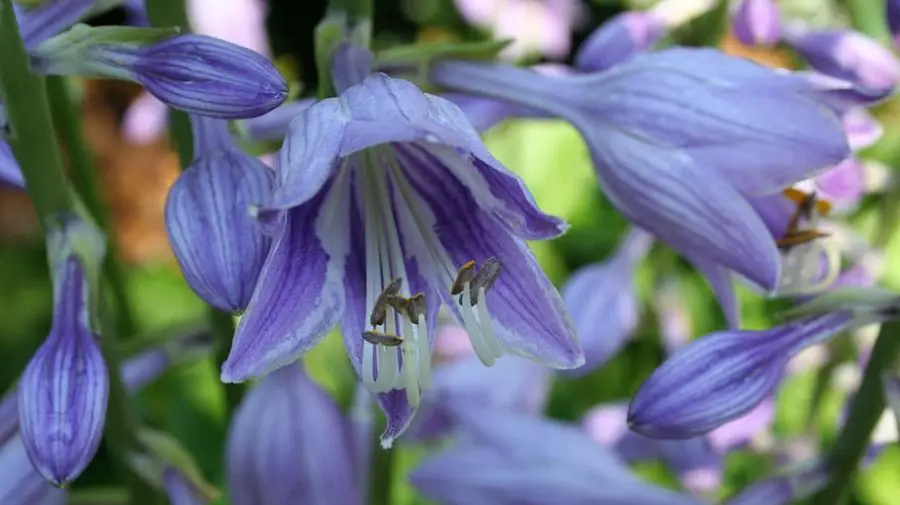
Low Maintenance, High Impact:
One of the biggest draws to growing Hostas is their low maintenance requirements.
They don’t need much sun, they’re relatively drought-tolerant once established, and they come back year after year, growing more impressive with age.
Adaptability to Container Gardening
Thriving in Pots:
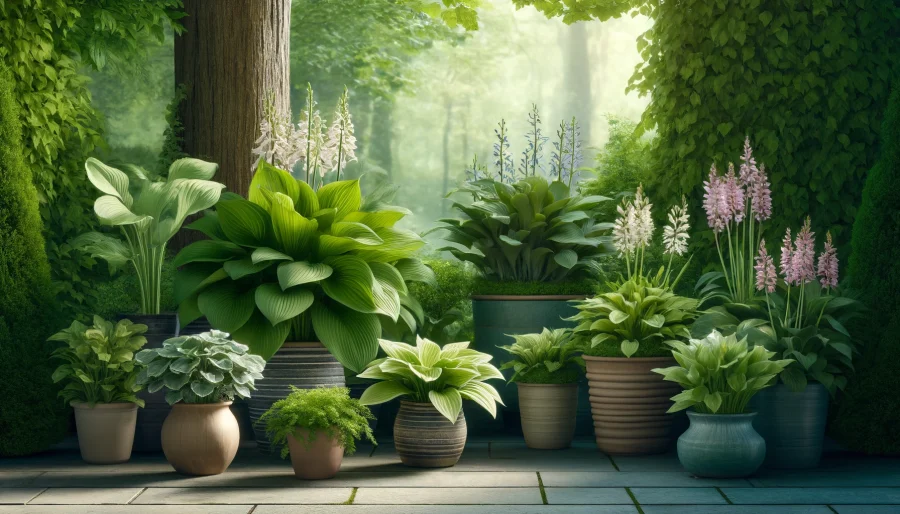
For those with limited garden space, Hostas are a perfect fit. Their adaptability to containers allows gardeners to enjoy their beauty on patios, balconies, and even indoors.
With the right pot and a bit of care, a Hosta can turn any corner into a vibrant green nook.
Creative Container Combinations:
Mixing Hostas with other shade-loving plants can create stunning visual effects.
Imagine a container with a ‘Blue Mouse Ears’ Hosta, surrounded by cascading ivy and bright impatiens, offering a play of texture and color that enlivens any shady spot.
This introduction sets the stage for a detailed exploration of growing Hostas, highlighting their versatility and ease of care that make them so popular among gardeners.
Ready to learn more about choosing the right Hostas and how to care for them in pots? Stay tuned!
Choosing the Right Pot for Your Hostas
Breathable, Well-Draining Containers: Why They Matter
Choosing the right pot is important for the health and growth of your Hostas, especially when they’re not planted directly in the ground. Here’s why:
- Breathability: Roots need air as much as they need water. Breathable pots allow air to circulate around the roots, promoting healthier growth and reducing the risk of root rot.
- Drainage: Hostas require well-draining soil to prevent water from pooling at the roots, which can lead to fungal diseases and other health problems. A pot with good drainage helps mimic their natural growing conditions.
Recommended Materials
When selecting a pot for your Hostas, consider these materials for the best results:
- Terra Cotta: Classic and effective, terra cotta pots allow for air and moisture to move through the walls, helping soil dry more evenly.
- Unglazed Ceramic: Similar to terra cotta, unglazed ceramic also offers excellent breathability and drainage, making it a stylish choice for indoor and outdoor settings.
Why Consider Fabric Pots?
AC Infinity Heavy Duty Fabric Pots, 3 Gallon
Fabric pots are becoming a popular choice for gardeners for several reasons:
- Enhanced Drainage and Airflow: The porous nature of the fabric allows water and air to pass through easily, which can significantly improve plant health by preventing overwatering and providing plenty of oxygen to the roots.
- Root Pruning: When roots reach the edge of a fabric pot, they sense the drier air outside and naturally stop growing outward, effectively “air pruning” themselves. This encourages the growth of more feeder roots, which can absorb water and nutrients more efficiently.
- Portability: Fabric pots are lightweight and often come with handles, making them easy to move around the garden or even indoors as seasons change.
Size Matters
- Room to Grow: Ensure the pot is slightly larger than the Hosta’s current root ball but not too large; excess soil can stay wet and cause root issues.
- As a rule of thumb, choosing a pot that is about 1-2 inches larger in diameter than the previous one is ideal.
Summary
Choosing the right pot for your Hostas can make a big difference in their health and aesthetic appeal.
Whether you opt for terra cotta, ceramic, or innovative fabric pots, ensuring good drainage and breathability will help your Hostas thrive in their container environment.
Ready to pot your Hostas? Let’s get to it and watch them flourish!
Ideal Soil Mix and Planting Techniques for Hostas
Crafting the Perfect Soil Mix
Choosing the right soil mix is crucial for the success of your Hostas, especially when they are grown in pots.
Here’s what you need for a thriving Hosta:
- Rich in Organic Matter: Use a generous amount of compost in your mix. It enriches the soil with nutrients and improves its structure, making it ideal for Hostas which thrive in nutrient-rich environments.
- Coco Coir and Perlite: My go-to sustainable medium is a blend of coco coir and perlite.
- This potting mix is eco-friendly and it ensures good drainage and aeration preventing root rot in container gardening.
Step-by-Step Planting Guide
Let’s walk through the process of planting your Hosta in a pot:
- Select the Right Pot: Ensure it has drainage holes. A good pot size is about 2 inches larger in diameter than the plant’s current container.
- Prepare the Pot: Place a mesh or coffee filter over the drainage holes to prevent soil loss while allowing water to escape.
- Mix Your Soil: Combine 60% coco coir with 30% compost and 10% perlite. This mix ensures moisture retention while still providing enough drainage.
- Planting Your Hosta: Carefully remove the Hosta from its nursery pot. Loosen the roots gently, and place it in the new pot, ensuring the top of the root ball is just below the rim.
- Add Soil and Settle: Fill around the Hosta with your soil mix, pressing lightly to remove air pockets.
- Initial Watering: Water the plant thoroughly. This helps settle the soil around the roots and ensures there are no air pockets.
The Importance of Proper Setup
- Soil Level: Keep the soil level about an inch below the pot rim to allow for easy watering.
- Watering Right After Planting: This initial deep watering is vital to help establish the Hosta, ensuring that the roots are in contact with the moist soil, promoting healthy growth.
By following these steps, your Hostas will be set up for success, flourishing in their containers and adding beauty to your garden or home.
Understanding Hostas’ Light Preferences
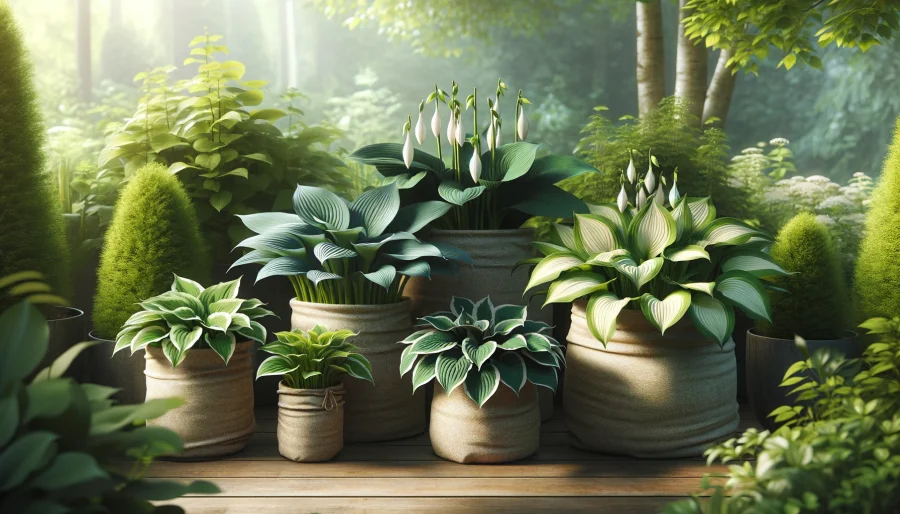
Hostas are famously adaptable and can thrive in a variety of light conditions, but they do best in partial shade.
Here’s what you need to know to get the lighting just right:
Light Requirements and Optimal Placement for Hostas
- Shade Lovers: Most Hosta varieties prefer to avoid the harsh midday sun. They thrive under the dappled light provided by trees or in the shadow of a building, where they receive filtered sunlight.
- Sun Tolerance: While most Hostas prefer shade, some can handle more sun, especially those with yellow or gold leaves. The extra light can help intensify their leaf color. However, too much direct sunlight can scorch their leaves, especially in hotter climates.
Tips for Placing Hostas in Different Climates and Indoor Settings
- Cooler Climates: In areas with cooler summers, Hostas can handle more direct morning sunlight but should be protected from intense afternoon rays. A north-facing garden that avoids the intense late-day sun is ideal.
- Warmer Climates: In warmer regions, it’s crucial to provide more shade. Hostas will benefit from being placed where they can avoid the sun during the hottest parts of the day. East-facing locations that offer morning light and afternoon shade are perfect.
- Indoor Care: When growing Hostas indoors, place them near a window that offers bright, indirect light. A window facing north or east provides the ideal lighting conditions. Avoid south-facing windows unless you can provide filtered light to prevent leaf burn.
- Adjusting to Light Changes: When transitioning Hostas from one lighting condition to another, do so gradually. Sudden changes can stress the plants, leading to leaf burn or shock.
By understanding and adjusting to the specific light needs of your Hostas, you can ensure they not only survive but thrive, whether nestled in your garden or brightening up your indoor space.
Remember, the right light is key to unlocking the beauty of Hostas’ varied and vibrant foliage.
Watering and Moisture Management for Hostas
Proper watering is crucial for Hostas, especially when they’re grown in pots. Here’s how to keep your Hostas happy and hydrated:
Optimal Watering Practices
- How Much and How Often: Hostas prefer consistently moist soil, but it’s important to avoid waterlogging. The goal is to keep the soil evenly moist.
- Typically, watering once a week is sufficient, but you may need to adjust based on weather conditions and soil drainage. During hot, dry spells, more frequent watering may be necessary.
- Watering Technique: Always water deeply and directly at the soil level, avoiding wetting the leaves to prevent fungal diseases. Use a watering can or hose attachment to deliver water slowly, allowing it to soak in deeply and reach the roots.
- Check Soil Moisture: Before watering, check the soil moisture by sticking your finger about an inch into the soil. If it feels dry at this depth, it’s time to water. If it still feels moist, you can wait a bit longer.
Avoiding Common Watering Mistakes
- Overwatering: This is a common issue, especially in container gardening where drainage may be less efficient. Overwatering can lead to root rot and other fungal issues. To prevent this, ensure your pots have good drainage and you’re not leaving water in saucers under the pots.
- Under-watering: Hostas can also suffer from under-watering, evidenced by drooping leaves and dry, crispy edges. If you notice these signs, increase your watering frequency.
- Seasonal Adjustments: Be mindful of seasonal changes. Hostas need less water in the cooler months and more during the growing season. Reduce watering frequency as the weather cools and especially as Hostas begin to die back in the fall.
By mastering these watering techniques and understanding the needs of your Hostas, you’ll ensure they remain lush and healthy.
Proper moisture management will not only enhance their growth but also their resilience against pests and diseases.
Feeding and Fertilization for Potted Hostas
Hostas in pots require more frequent fertilization than those in the ground because container soil loses nutrients more quickly.
Regular feeding ensures that your Hostas have the nutrients they need to produce lush, vibrant leaves and maintain healthy growth.
Why Regular Fertilization is Essential and Choosing the Right Fertilizer
- Balanced Fertilizer: A balanced, slow-release fertilizer (such as a 10-10-10 or 14-14-14 NPK ratio) is ideal for Hostas. These numbers represent the proportions of nitrogen (N), phosphorus (P), and potassium (K), which are all crucial for the health of your plants. Nitrogen supports leaf growth, phosphorus is good for the roots and flowers, and potassium promotes overall plant health.
- Organic Options: For those preferring organic gardening, well-composted manure or an organic granular fertilizer are excellent choices. These options release nutrients slowly, reducing the risk of over-fertilization.
Application Schedule
- Beginning of the Growing Season: Apply a slow-release fertilizer in early spring as new growth appears. This initial feeding supports the vigorous leaf development typical of Hostas at this time.
- Mid-Season Boost: Consider a second application of fertilizer in mid-summer to rejuvenate plants and help them recover from any leaf damage or stress experienced during early summer growth.
- Avoid Late Season Fertilization: Refrain from fertilizing Hostas late in the season. Late fertilization can stimulate new growth that won’t harden off in time for winter, making the plants more vulnerable to cold damage.
How to Apply Fertilizer
- Mix into the Soil: When planting or repotting Hostas, mix the slow-release fertilizer into the top layer of soil.
- Top-Dressing: For established plants, gently work the fertilizer into the soil around the base of the plant, avoiding direct contact with the leaves and stems.
- Water Well: After applying fertilizer, water the soil thoroughly. This helps distribute the nutrients down to the roots and prevents root burn.
By following these feeding and fertilization tips, your Hostas will continue to thrive and beautify your garden or home year after year.
Regular, thoughtful fertilization is key to maintaining the lush, healthy foliage that makes Hostas so appealing.
Winter Care and Protection for Potted Hostas
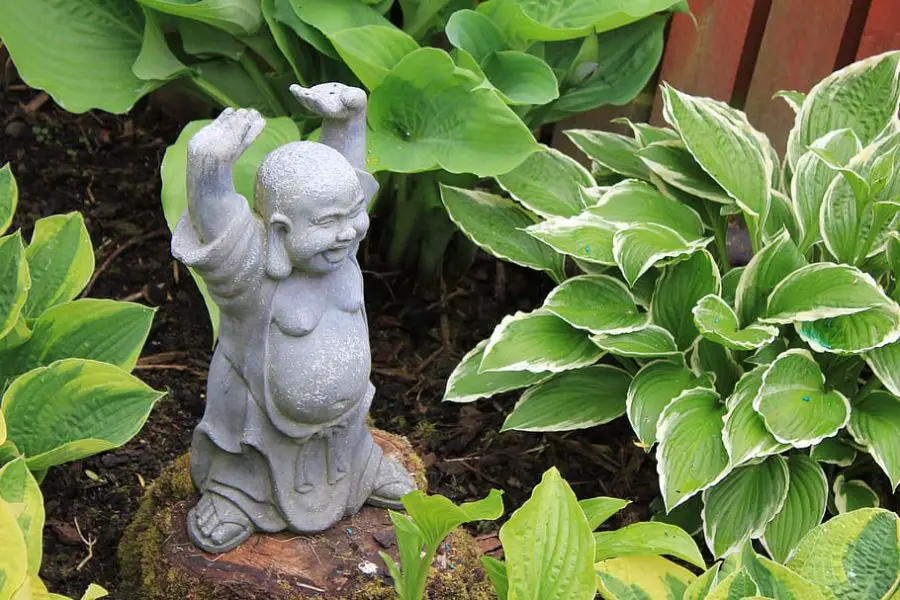
Hostas in pots face more significant challenges during winter compared to those planted in the ground.
The roots are more exposed to cold temperatures, which can freeze and kill the plant.
It’s important to know that Hostas in containers may lose up to two hardiness zones compared to their usual resilience, making winter protection essential, especially in colder climates.
Understanding the Challenges
Hostas are well-regarded for their hardiness and can thrive across a wide range of climates, typically suited for USDA Hardiness Zones 3 to 9.
This means they can withstand winter low temperatures down to about -40°F in zone 3.
However, the specific cold tolerance can vary significantly between different Hosta varieties.
For example, varieties like ‘Blue Angel’ and ‘Sum and Substance’ are known for their robust nature and can handle colder climates very well, while others may require more protection from frost and extreme cold.
What are Hosta hardiness zones and low temperatures?
In colder zones (3-4), Hostas like ‘Blue Cadet’ and ‘Patriot’ are noted for their ability to endure harsh winter conditions.
As you move into slightly warmer zones (5-6), varieties such as ‘August Moon’ and ‘Francee’ are recommended.
For those in zones 7-8, ‘Rainforest Sunrise’ and ‘Sum and Substance’ are good choices due to their somewhat hardy nature.
Hostas in these zones may need additional protection if unexpected severe frost is expected, such as using mulch to insulate the soil and covering the plants with frost cloth or blankets to prevent damage from freezing temperatures.
It’s important to note that Hostas in containers may be more vulnerable to cold since their roots are less insulated compared to those planted in the ground.
In such cases, moving pots to a sheltered location, such as an unheated garage or under a deck, during the coldest months can help prevent the roots from freezing.
Additionally, consider wrapping the pots with insulating materials like burlap or bubble wrap for extra protection against the cold.
For more detailed information on caring for Hostas in winter and selecting the right varieties for your climate, you can refer to resources like the USDA Plant Hardiness Zone Map to determine the best Hostas for your specific location (USDA Plant Hardiness).
Guidelines for Managing Hostas in Pots During Winter

- Insulation: Wrap the pots in burlap, bubble wrap, or insulating foam to protect the roots from freezing. This layer of insulation can help mimic the natural protection that soil provides in the ground.
- Relocation: Move the pots to a sheltered location, such as against the house, under a deck, or inside an unheated garage or shed. These spots provide some protection from the wind and severe temperatures.
- Elevate the Pots: Elevating the pots off the ground on pot feet or wooden blocks can prevent the pots from freezing to the ground and improve drainage, reducing the risk of the soil becoming waterlogged and then freezing solid.
Ensuring Dormancy Requirements are Met
- Reduce Watering: Once your Hostas die back and go dormant, significantly reduce watering. The soil should be kept only slightly moist to prevent the roots from drying out completely, which is critical to avoid during their dormant state.
- Avoid Fertilizing: Do not fertilize Hostas in late fall or winter as this can stimulate new growth that will not survive the cold temperatures.
- Monitor and Adjust: Keep an eye on the weather forecasts and the condition of your Hostas. If temperatures warm temporarily, check the moisture levels of the soil and adjust as necessary to prevent the soil from drying out entirely.
By following these winter care guidelines, your potted Hostas can be protected from the harshest of elements, ensuring they emerge healthy and vigorous when spring arrives.
Growing Hostas Indoors as Houseplants
Growing Hostas indoors allows you to enjoy their lush foliage year-round, regardless of your outdoor climate.
Here’s how to provide the ideal indoor environment:
Ideal Conditions for Indoor Hostas
- Light Requirements: Hostas typically prefer shaded areas outdoors, but indoors, they need bright, indirect light to thrive. A north-facing window is ideal, but an east or west-facing window can also work if you use sheer curtains to diffuse direct sunlight, which can scorch the leaves.
- Temperature and Humidity: Hostas prefer cooler temperatures, ideally between 60-70°F. They benefit from higher humidity levels. You can increase humidity around the plants using a humidity tray or by placing a humidifier nearby.
Potting and Soil
- Container Selection: Choose a pot with adequate drainage holes to prevent waterlogging. Ceramic or plastic pots are suitable as long as they allow room for growth.
- Soil Mix: Use a well-draining potting mix. A blend of coco coir, perlite, and organic compost works well for Hostas, providing the necessary drainage and nutrient retention.
Watering and Feeding
- Watering: Keep the soil consistently moist but not waterlogged. Water when the top inch of soil feels dry to the touch. Reduce watering in the winter when the plant’s growth slows down.
- Fertilization: Feed Hostas with a balanced, water-soluble fertilizer every 4-6 weeks during the growing season. Avoid fertilizing in the winter when the plant is not actively growing.
General Care
- Pruning and Maintenance: Remove any yellow or dead leaves to keep the plant healthy and to prevent any potential disease spread. This also helps the plant maintain its aesthetic appeal.
- Pest Management: Keep an eye out for pests such as aphids and spider mites. Indoor Hostas may be less prone to slug and snail damage, but they can still attract other common houseplant pests. Use insecticidal soap or neem oil to manage infestations.
Seasonal Adjustments
Growing Hostas indoors requires simulating their natural winter dormancy period to ensure they remain healthy and vibrant. Here’s how you can achieve this:
Inducing Dormancy for Indoor Hostas:
- Temperature Control: Hostas need cooler temperatures to enter dormancy. Ideally, the temperature should be around 40-50°F (4-10°C). If you have a cool basement or garage that stays within this temperature range during winter, it could serve as a good location for your Hostas.
- Reducing Light: During their dormancy period, Hostas require less light. Moving them to a darker space or reducing the duration of light exposure can help initiate the dormancy process.
- Watering Adjustments: Water your Hostas less frequently during their dormancy period. The soil should be kept slightly moist but not wet, as Hostas are not actively growing and therefore use less water.
- Why Dormancy Matters: The dormancy period is crucial for Hostas as it allows them to rest and conserve energy for the next growing season. Without this rest period, indoor Hostas might struggle to thrive and reproduce effectively.
- Care During Dormancy: Keep an eye on your Hostas for any signs of disease or stress during the winter. This is also a good time to clean up any dead foliage and ensure the plant is ready for spring growth.
By replicating these cooler, darker conditions, you can help ensure that your indoor Hostas experience a beneficial dormancy period, preparing them for a robust return in the growing season.
Winter Care and Protection for Potted Hostas
Hostas are generally hardy plants but can be susceptible to a range of pests and diseases, especially when grown in containers. Here’s how you can manage these challenges effectively:
Common Pests Affecting Hostas:
- Slugs and Snails: These pests are particularly attracted to the moist, shaded environments that Hostas thrive in. They chew irregular holes in the leaves.
- Aphids: These small pests suck sap from the Hostas, which can lead to distorted growth and a sticky residue on the leaves that attracts other problems.
- Spider Mites: These tiny pests cause yellow stippling on the leaves as they suck on the plant sap.
- Vine Weevils: The larvae can be particularly destructive to Hostas, eating the roots, while adults eat notches into the edges of leaves.
Preventive Measures:
- Good Hygiene: Regularly remove dead leaves and debris from around your Hostas to reduce hiding places for pests and prevent fungal spores from taking hold.
- Water Carefully: Avoid overhead watering to minimize the risk of fungal diseases and make the environment less appealing to slugs and snails.
- Barriers: For slugs and snails, barriers such as diatomaceous earth around the pot can help prevent these pests from reaching your plants.
- Inspect Regularly: Check your plants frequently for early signs of pests or diseases, which can often be controlled more easily when caught early.
Treatment Options:
- Natural Predators: Introducing natural predators like ladybugs can help control aphid populations.
- Insecticidal Soap and Neem Oil: These are effective against a range of pests including aphids, spider mites, and mealybugs, and are safe to use on Hostas. Apply according to the product instructions, usually in the cooler part of the day to avoid leaf burn.
- Slug Baits: Environmentally friendly slug baits can protect Hostas from slugs and snails.
- Fungicides: For fungal diseases such as leaf spot and crown rot, fungicidal sprays can be used. Be sure to follow the manufacturer’s guidelines for application.
Preventive Measures for Protecting Outdoor Hostas from Rabbits and Deer:
When Hostas are grown outdoors, they can become vulnerable to damage from rabbits and deer.
These animals are attracted to the soft, leafy texture of the Hostas and can quickly devastate a garden full of these plants.
Hostas are actually edible and popular for cooking in Japan when young so it’s no surprise deer and rabbits like them too.
- Physical Barriers:
- Fencing: Installing fencing around your garden is one of the most effective ways to protect Hostas from deer and rabbits. A fence should be at least 8 feet tall to deter deer, as they can jump high. For rabbits, a lower fence can work but should be buried at least a few inches into the ground to prevent them from digging underneath.
- Repellents:
- Commercial Repellents: There are many repellents available that can be sprayed directly on the plants. These usually have a taste or smell that is unpleasant to deer and rabbits.
- Natural Repellents: Homemade repellents, such as those made from garlic or hot peppers, can also deter these animals. Spraying these mixtures on and around your Hostas can help keep the pests at bay.
- Plant Choices:
- Companion Planting: Growing plants that rabbits and deer dislike among your Hostas can help protect them. Plants such as garlic, onions, and marigolds not only repel pests due to their strong scents but also add diversity to your garden.
- Routine Checks:
- Regular Monitoring: Regularly checking your garden for signs of intrusion (such as tracks or nibbled leaves) can help you take timely action to reinforce defenses if necessary.
By integrating these strategies into your garden management, you can enjoy your Hostas without significant damage from local wildlife.
By implementing these preventive measures and being ready with appropriate treatments, you can keep your container-grown Hostas healthy and vibrant, minimizing the impact of pests and diseases.
Repotting and Division for Growing Hostas in Pots
Signs That Show It’s Time for Repotting or Dividing Hostas:
- Overcrowding: If the Hosta appears too large for its container, with leaves tightly packed and competing for space.
- Roots at the Surface: Visible roots on the soil surface or growing out of the drainage holes indicate the plant has outgrown its current pot.
- Slowed Growth: Reduced growth or smaller leaves than usual can suggest that the Hosta is root-bound and needs more space to thrive.
- Soil Deterioration: If the potting mix has degraded and become compacted or poorly draining, it’s time to refresh the environment with a repot or division.
Step-by-Step Process on How to Safely Repot and Divide Hostas:
- Preparation:
- Choose a cool, cloudy day to minimize stress on the plants.
- Prepare larger pots if repotting, or have several pots ready if dividing. Ensure they have good drainage.
- Removing the Hosta:
- Water the Hosta thoroughly a few hours before repotting to ease rootball removal and reduce root damage.
- Gently tip the container sideways and ease the Hosta out. If the plant is stuck, you might need to run a knife around the edge of the pot.
- Dividing the Hosta:
- Place the rootball on a flat surface and use a clean, sharp knife or garden spade to slice through the center of the rootball. For very large clumps, further divisions can be made. Ensure each section has at least two or three growth points (buds).
- Trim any excessively long or damaged roots.
- Repotting:
- Fill the new pots with a mix of coco coir, compost, and perlite for good drainage and moisture retention.
- Position the Hosta in the pot so that the crown (where the roots meet the stems) is just at or slightly below the soil surface.
- Backfill with your potting mix, gently firming down to eliminate air pockets.
- Aftercare:
- Water the newly potted or divided Hostas thoroughly.
- Keep the Hostas in a shaded area for a few days to allow them to recover and adjust before moving them back to their usual location.
- Monitor moisture levels closely for the first few weeks, keeping the soil consistently moist but not waterlogged.
By following these steps your Hostas will continue to grow vigorously and maintain their health, whether they remain in pots or are divided for further propagation.
This process not only rejuvenates old plants but also maximizes your Hosta collection without additional cost.
Growing Hostas Indoors: A Touch of Green Elegance
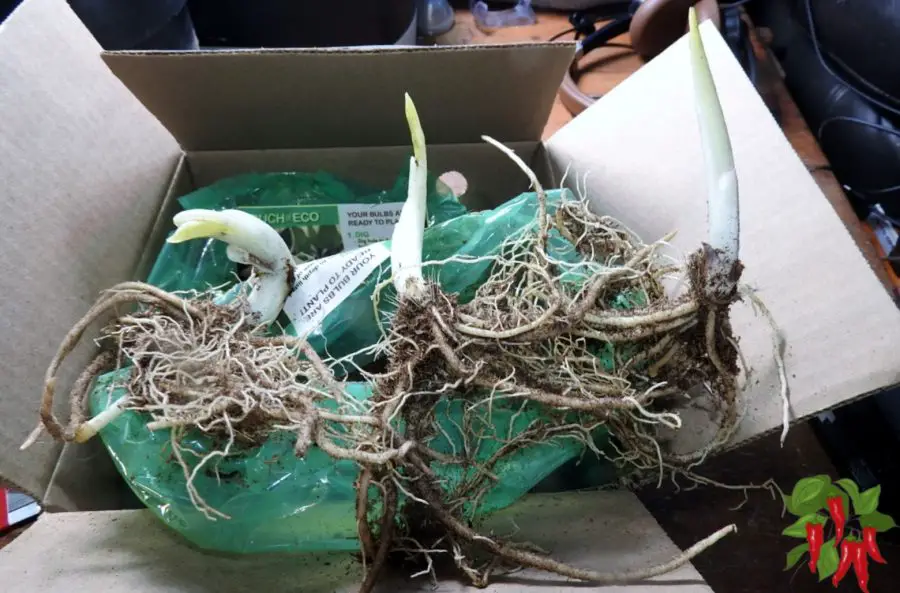
Let’s chat about bringing a slice of the garden indoors with Hostas. Known for their lush foliage and striking leaves, Hostas can transform any indoor space into a verdant sanctuary.
Whether it’s the soft waves of a ‘Blue Angel’ or the striking variegations of a ‘Patriot’, each Hosta adds a unique splash of color and texture.
They’re not just plants; they’re natural art pieces that invite a calm, soothing atmosphere into your home.
Light Requirements for Indoor Hostas
Keepin’ it cool and cozy, Hostas thrive away from the harsh rays of direct sunlight.
Placin’ them near north-facing windows is your best bet for that gentle light they love.
If you’ve only got east, west, or south-facing windows, no worries. Just make sure to use sheer curtains to soften the sunlight.
This setup mimics the dappled shade of their natural environment, keeping those leaves bright and happy.
Additional Care Tips
- LED Grow Lights: If your home isn’t blessed with ample natural light, LED grow lights can do the trick.
- They’re great for Hostas, providing the full spectrum of light without the heat stress.
- Just set ‘em up to mimic natural light patterns, and your Hostas will be groovin’.
- Humidity is Key: Hostas like it on the humid side, which can be a challenge indoors, especially during dry winter months.
- You can boost the moisture in the air around your Hostas by placing a humidifier nearby or setting their pots on trays filled with water and pebbles. This little trick lets water evaporate right under the leaves, giving them the humid hug they crave.
By bringing Hostas indoors, you’re not just adding plants to your space; you’re creating a green retreat that’ll keep you feeling refreshed and connected to nature.
Just remember to keep ‘em cool, moist, and out of the direct sun, and they’ll thrive like they’re chillin’ in their natural woodland retreat.
Just remember they do require a winter dormancy period. Keep it green, friends!
Conclusion: Container Gardening with Hostas
We’ve explored the ins and outs of growing Hostas in pots, and I hope you’re as excited as I am about the possibilities.
Growing Hostas in containers is not just about convenience; it’s about creativity, versatility, and bringing a touch of nature right to your doorstep.
Benefits of Container Gardening with Hostas:
- Flexibility: Move them around to suit the seasons or your design whims.
- Space Savers: Perfect for patios, balconies, or even indoor settings.
- Control: Manage soil conditions and moisture more effectively.
Why You Should Try Growing Hostas in Pots:
- Easy for Beginners: If you’re new to gardening, Hostas are forgiving and a great starting point.
- Instant Impact: Quickly beautify any space with their lush, leafy presence.
- Experiment with Designs: Mix and match Hosta varieties and companion plants to create unique container displays.
So, why not grab a pot and a Hosta or two, and start your own little green haven?
Whether you’re decking out a drab corner of a patio or brightening up a shady spot in your living room, Hostas in containers are a fantastic way to go.
Give it a try, and let the tranquil beauty of Hostas transform your space!
Call to Action: Join the Hosta Potting Party!
Howdy, fellow green thumbs! We’ve dived deep into the world of growing Hostas in containers, and now I’d love to see what you’ve been up to in your gardens.
Have you tried potting Hostas? Did you mix them with other plants? Share your experiences with us! Whether it’s your first Hosta or a full-blown Hosta haven we’re here to celebrate each one.
Read more: Backyard Gardening Ideas
Resources: Growing Hostas in Pots
Remember, gardening is a journey, not a race. So, grab your pots, pick your Hostas, and let’s make our little corners of the world a bit greener together!
If you’re hungry for more gardening knowledge or need some guidance on caring for your plants, check out these fantastic resources:
- UGA Cooperative Extension: Offers a detailed guide on growing hostas, including information on cultural requirements, fertilization, watering, and dealing with pests and problems. It also provides a list of recommended hosta varieties suitable for various landscape uses. Learn more about their cultivation tips here.
- Clemson Cooperative Extension: Provides insights on the types of hostas that thrive in different environmental conditions and detailed care instructions, including how to protect them from pests and diseases. More details can be found here.
- North Carolina Cooperative Extension: This resource includes information on the best conditions for growing hostas, including soil, light, and moisture requirements, as well as advice for planting and caring for hostas throughout the seasons. They also discuss the various species and cultivars of hostas that are ideal for different hardiness zones. Check out more here.
- University of Minnesota Extension: This extension provides specific guidelines on planting, transplanting, and dividing hostas. It also includes tips on how to care for hostas to ensure their health and longevity, covering aspects like watering, mulching, and fertilizing. Further information can be found here.
These resources offer valuable tips and detailed care instructions that can help you maximize the health and aesthetic appeal of your Hostas, making them a highlight in your garden.











